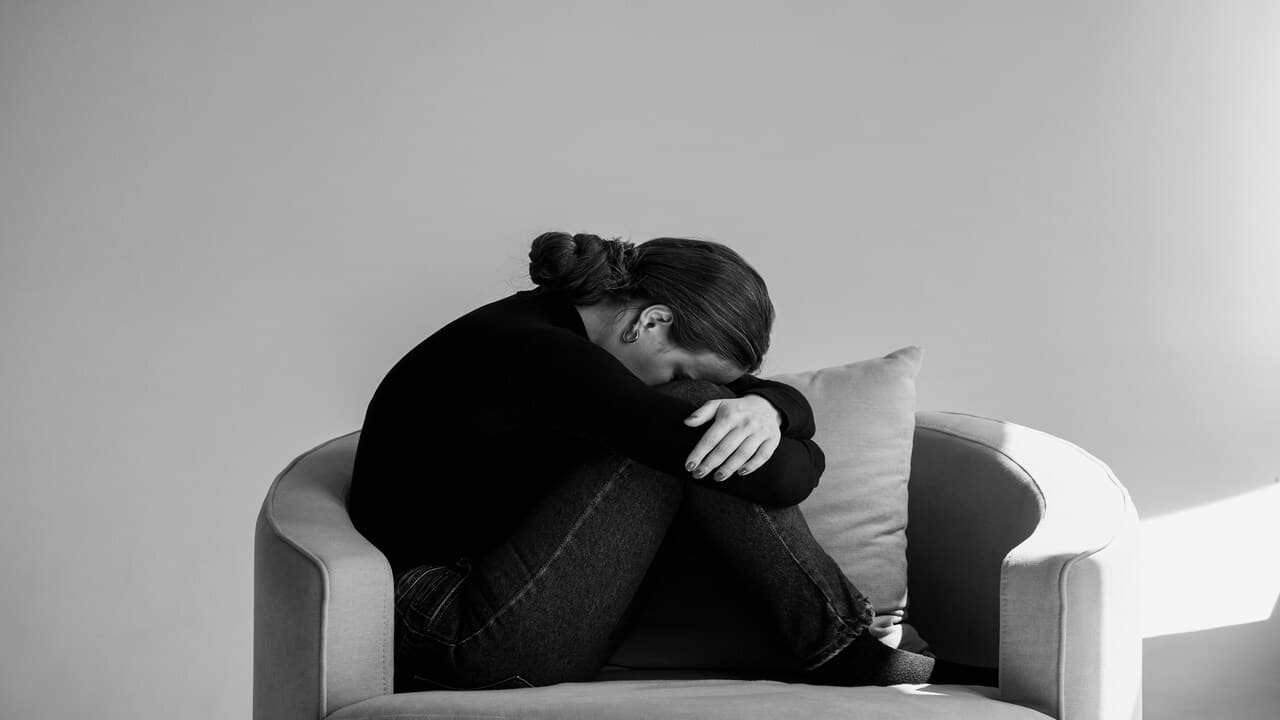
Before anything else, here’s a quick disclaimer: None of what you’re about to read is medical or psychiatric advice. If you believe you or your partner may be struggling with a personality disorder, it’s best to seek the guidance of a licensed professional. These insights are here to help you better understand how personality disorders can play out in relationships, so you can spot patterns, set boundaries, and make healthier choices.
Relationships are complicated enough, but when a personality disorder is in the mix, the dynamics can become especially confusing, intense, or even draining. These conditions often impact how someone relates to others, how they regulate emotions, and how they handle conflict. And while every relationship is unique, there are some recognizable ways personality disorders can shape the connection between two people. Understanding these dynamics doesn’t just protect you–it also gives you the clarity to navigate them with compassion but also firmness where it’s needed.
1. Difficulty with Emotional Regulation

One of the most common ways personality disorders affect relationships is through intense emotional ups and downs. A partner may swing from affection to anger quickly, leaving you feeling like you’re walking on eggshells. This can drain your emotional energy because you’re constantly guessing how they’ll react. The key here is not to take responsibility for regulating their moods–it’s not your job. Instead, maintain your own calm, avoid fueling escalation, and encourage professional support when needed.
2. Intense Fear of Abandonment

Some personality disorders involve deep fears of rejection or abandonment, which can show up as clinginess, jealousy, or even controlling behavior. While it may come from a place of vulnerability, the pressure it puts on you can strain the relationship. If you notice this dynamic, be clear and consistent with your communication. Reassure where possible, but don’t compromise your independence or personal space just to avoid conflict. Boundaries keep the relationship healthy.
3. Struggles with Trust and Suspicion

Distrust is another recurring theme. A partner may constantly question your motives, accuse you of dishonesty, or interpret neutral actions as threats. Living under a microscope like this can erode intimacy over time. The best approach is to stay steady–don’t get trapped into over-explaining yourself every time. Encourage open conversations about trust, but remember that deeply rooted suspicion often requires professional intervention.
4. Black-and-White Thinking

Many people with personality disorders see others in extremes: you’re either all good or all bad, never in between. In relationships, this can look like being idolized one day and vilified the next. That rollercoaster can be exhausting and destabilizing. If this shows up, focus on staying grounded rather than defending yourself against shifting perceptions. Validate their feelings where you can, but don’t let yourself get pulled into extreme labels about who you are.
5. Difficulty Taking Responsibility

Another challenge is a partner who struggles to acknowledge their role in conflicts. Everything may get blamed on you, or they may twist situations so they’re always the victim. This can make you second-guess yourself and create cycles of guilt. The practical move is to stop engaging in circular blame arguments. Use “I” statements about your experiences and keep boundaries firm. Accountability is a two-way street, and you can’t carry it all alone.
6. Intense or Unstable Relationships

Some relationships with personality disorders burn bright but burn out fast. The intensity can feel intoxicating at first, with love-bombing or high emotional investment, but quickly tip into volatility. The cycle of highs and lows can leave you dizzy. To handle this, ground yourself outside the relationship–through hobbies, friendships, and self-care–so you don’t lose perspective or get fully consumed by the chaos.
7. Communication Breakdowns

Healthy communication is tough enough, but personality disorders can amplify misunderstandings. A small disagreement might escalate into a huge fight, or attempts to clarify might be interpreted as criticism. To navigate this, simplify your communication. Be clear, direct, and calm, avoiding sarcasm or layered meaning. If things heat up, it’s often better to pause and revisit later than to keep pushing in the moment.
8. Patterns of Manipulation

Not all manipulation is intentional, but it can still be damaging. This might look like guilt-tripping, gaslighting, or using affection as a bargaining chip. Over time, these tactics can erode your confidence and sense of reality. A practical response is to name the behavior to yourself–even if you don’t call it out in the moment–and to stay anchored in your version of events. Journaling can help you keep track of patterns that might otherwise feel confusing.
9. Sensitivity to Criticism

Criticism, even gentle feedback, may trigger disproportionate reactions like anger, withdrawal, or defensiveness. This makes constructive problem-solving tough. Instead of framing things as criticism, try to emphasize collaboration: “How can we work on this together?” But don’t let the fear of setting them off silence you. Your needs are valid, and communication can’t be one-sided forever.
10. Controlling or Possessive Behavior

Some personality disorders create patterns where a partner feels the need to control who you see, what you do, or even how you think. It might start small but can grow restrictive quickly. Recognize this for what it is–a red flag for unhealthy dynamics. The antidote is asserting autonomy and refusing to let your identity shrink. Boundaries may lead to conflict, but they’re necessary for protecting your independence.
11. Unpredictable Conflict Styles

With personality disorders, conflict resolution can feel inconsistent. One day, they want to talk everything out, the next day they shut down completely or explode in anger. This unpredictability keeps you on edge. To cope, set your own standards for conflict: stay respectful, take space when things get too heated, and refuse to participate in destructive fights. Consistency on your end can help stabilize interactions, even if they remain unpredictable on theirs.
12. Strained Intimacy

Emotional closeness can be difficult when someone struggles with vulnerability, trust, or regulation. Some partners may alternate between wanting extreme closeness and pushing you away. This hot-and-cold approach can leave you confused and insecure. To balance it, focus on your own emotional health and clarity. It’s okay to want intimacy, but not at the cost of your stability.
13. Financial or Lifestyle Instability

Certain disorders may impact impulse control, leading to risky spending, unstable jobs, or erratic lifestyle decisions. These ripple effects inevitably strain relationships, especially if you’re financially tied together. A practical step is to keep finances as separate as possible until trust is established. Support them in getting professional help, but don’t let their instability drag your life into chaos.
14. Feeling Responsible for Their Well-Being

It’s easy to slip into a caretaker role, believing you’re the only one holding things together. But taking full responsibility for another person’s emotions and choices is unsustainable. Over time, it breeds resentment. Instead, focus on interdependence–not codependence. Encourage therapy, support groups, or healthier coping mechanisms, but remind yourself: you’re a partner, not a therapist.
15. Impact on Your Mental Health

Being in a relationship with someone who has a personality disorder can take a toll on your own mental well-being. Anxiety, self-doubt, and emotional exhaustion are common. Don’t ignore these warning signs. Prioritize your own therapy, journaling, or stress-relief practices. Your mental health matters just as much as theirs, and protecting it isn’t selfish–it’s essential.
16. Difficulty Building Long-Term Stability

Because of the volatility in emotions, trust, and communication, long-term stability can be difficult to achieve. Plans may constantly shift, and the relationship might feel like it’s always in crisis mode. If you want long-term security, it’s important to ask yourself whether the patterns you’re seeing align with the future you want. Sometimes, the healthiest choice is to step back, even if you care deeply.
17. Cycles of Breakups and Reconciliation

Many relationships marked by personality disorders follow a push-pull pattern of intense breakups and passionate reconciliations. The cycle can feel addictive, almost like an emotional rollercoaster you can’t get off. Recognize that these cycles rarely resolve on their own. Breaking free requires clear boundaries and sometimes outside support to avoid getting trapped in the same loop.
18. Hope for Change vs. Reality

It’s natural to hope that love, patience, or time will change the dynamics. And while growth is possible, meaningful change usually requires professional help and consistent effort from your partner–not just from you. The tough truth is that your love alone cannot heal them. The most practical mindset is to balance compassion with realism, knowing when to stay supportive and when to step away for your own well-being.






Ask Me Anything